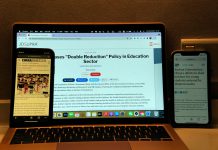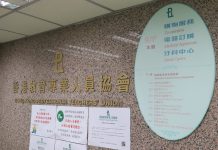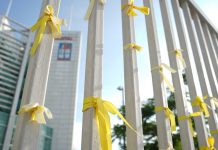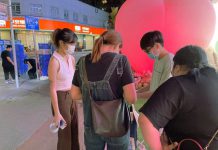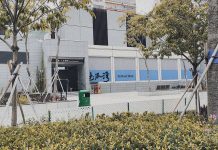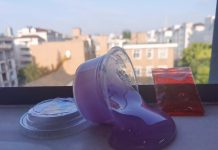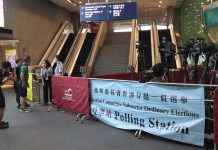Birdwatching reveals another side of Hong Kong
By Kanis Leung
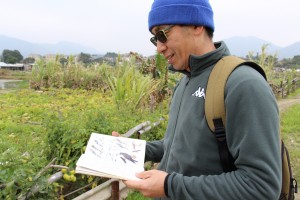
Just 15 minutes away from the Sheung Shui train station, the sounds of the city fade away; the crowds of commuters and parallel goods traders are out of sight. A mere two kilometres separates Long Valley from the densely-populated concrete jungle. But the distance is enough to transport the visitor to stretches of farmland as far as the eyes can see.
Out here, 48-year-old Chan Yung can escape the hassles of urban life and listen to the chirping birds. Until he discovered birdwatching 14 years ago, the school science lab technician only saw districts like Mongkok or Tsim Sha Tsui as the vibrant side of Hong Kong.
After taking up birdwatching, he has explored different rural and natural areas such as farmlands, forests and coastal areas. He has also learned to observe changes in the four seasons, not only from the features of birds, but also other natural details in his surroundings.
“People living in the city would not understand those in villages. They do not know there are villages in Hong Kong and people farming. They have never thought of this,” Chan says.
It took Chan a year to learn the required skills on his own, with the help of the bible of birdwatching, The Birds of Hong Kong and South China, which was first published in English in 1977 and in Chinese in 1992.
At a talk on birdwatching, Chan met some British birdwatchers who were looking for a fourth person to join their team for the World Wildlife Fund’s (WWF) Big Bird Race. The annual birdwatching competition requires participants to plan their own routes and record the birds they encounter. The team that identifies the most bird species through sight or sound wins the prize.
After joining his first race, Chan discovered that birdwatching had kept his teammates very fit, physically and mentally. They had sharp eyesight and hearing and were very knowledgeable about birds.
It could be because the British have a long tradition of birdwatching and are pioneers of birdwatching in Hong Kong. Colonial officials discovered the territory was a paradise for birds and set up the Hong Kong Bird Watching Society (HKBWS) in 1957.
Although Hong Kong is small in area, the territory boasts mountains, forests and wetlands, which provide habitats for different species to breed. At the same time, it is located in the middle of the East Asian-Australasian Flyway. Every year around 90,000 migratory birds, representing hundreds of species, will stop by.
Hong Kong’s wetlands, in particular, provide a rich environment for the birds. Yet, in the 1970s, it was proposed that the 116-hectare, Fairview Park residential development in Yuen Long be built on the Mai Po wetlands, an established habitat for hundreds of bird species.
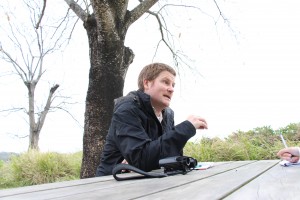
This sparked a huge protest from conservationists and birdwatchers. They asked the government to enact laws to restrict further development around the Mai Po Nature Reserve. In the end, the birdwatchers won and kept Mai Po untouched. The widespread media coverage of the issue raised public awareness and interest in birdwatching.
“Birdwatchers saved Mai Po. It was the very early successful conservation story in Hong Kong,” says Bena Smith, the conservation manager of Regional Wetland Projects for WWF Hong Kong.
Mai Po and Inner Deep Bay are now officially designated as a “Wetland of International Importance” under the Ramsar Convention, which promotes the conservation and wise use of these wetlands in the context of sustainable development.
The high level of protection of the reserve might give the impression that everything inside the preserved area is in a raw state of nature. But some areas have actually been “human modified”. Sometimes, says Smith, “nature needs a hand”. As an example, he cites an island across from the bird hide. Conservationists have planted bamboo plants and native trees on the island with the aim of turning it into a breeding site for birds.
Another successful human intervention is the introduction of buffalos, which are unwanted from other parts of New Territories. Although the buffalos do not belong to this habitat, their grazing keeps the grasses short, making the habitat comfortable for the birds to live in. Their daily routine saves the WWF money it would have had to spend on cutting the grass.
Compared to the United Kingdom and Nigeria, where he has previously worked, Smith says that on paper, conservation in Hong Kong is very good but “in practice, perhaps not so effective”.
Smith says the government does not have enough experts in its ranks. However, he sees the situation improving as more training is now provided in universities and the government is hiring more scientists.
Indeed, 10 years ago, there was insufficient and inadequate understanding and knowledge of birds. People reacted with panic when wild birds were sighted as they were seen as the source of avian flu. The discovery of a dead bird on Hong Kong island triggered the government’s mass cull of poultry in the New Territories.
This initially made things tough for birdwatchers, but in the following years scientists proved that the wild birds were unfairly blamed. The problem was with inappropriate practices in poultry farms.







